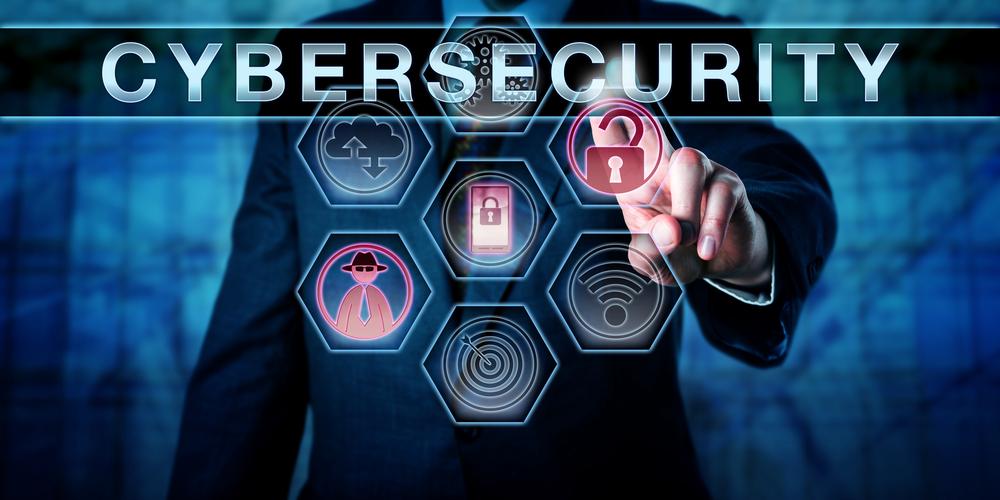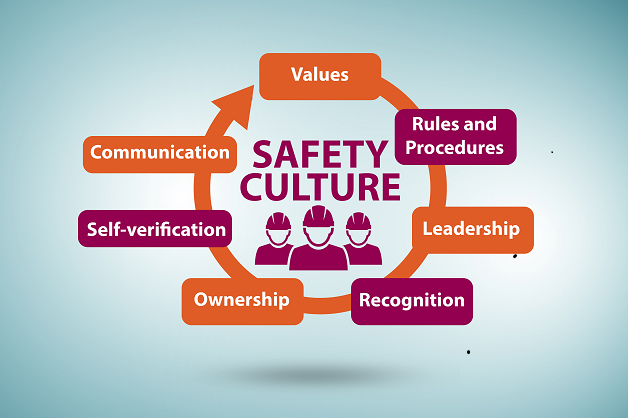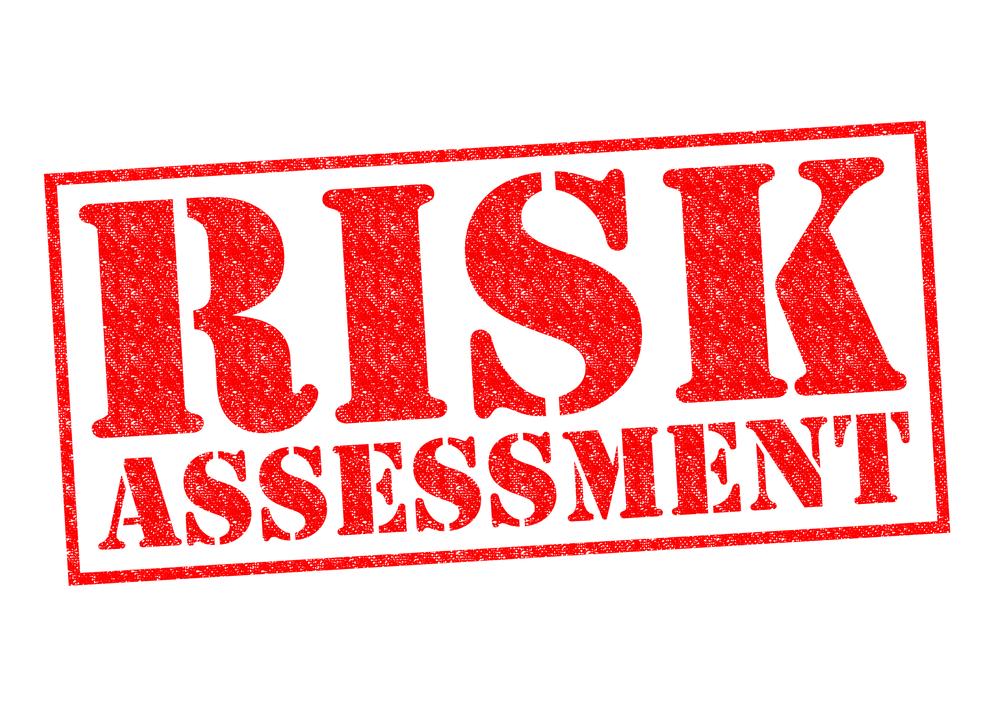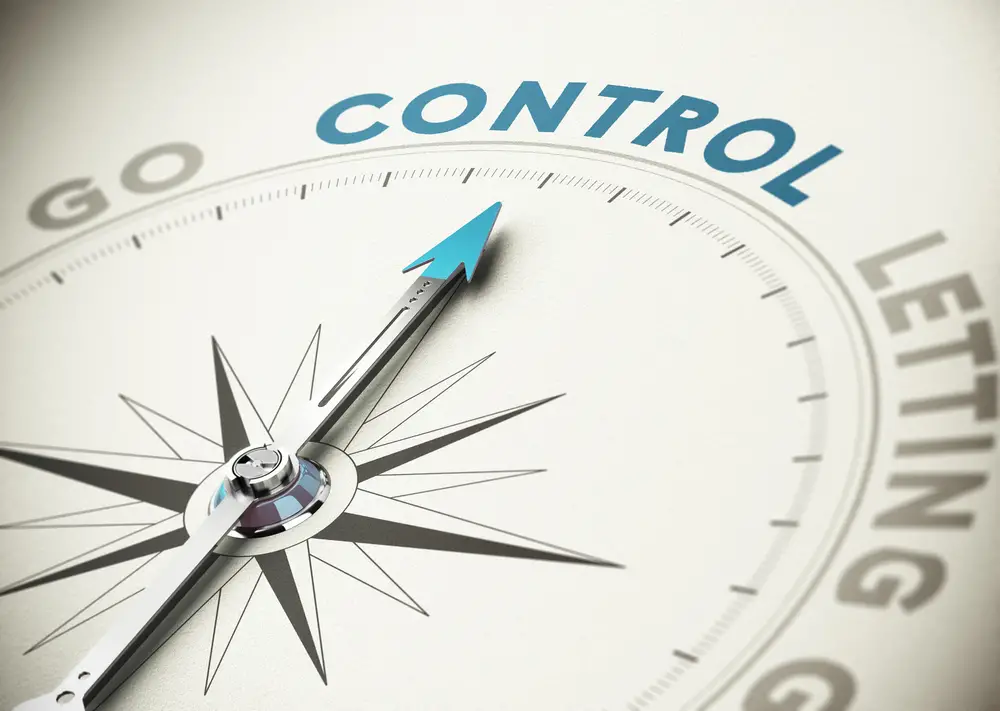A control measure is any action or step taken to reduce the risk of harm or injury posed by a hazard. Control measures are crucial to ensuring safety and preventing hazards in various settings.
A risk mitigation plan is essential for identifying, assessing, and reducing risks to a project or organization.
The primary purpose of implementing control measures is to monitor, eliminate or minimize potential risks that could cause harm to individuals or the environment.
These measures can be applied in different contexts, such as workplaces, healthcare settings, public spaces, and environmental protection initiatives.
Control measures come in different forms depending on the nature of the hazard and its potential impact. They may include physical barriers, administrative controls such as policies and procedures, employee training programs, personal protective equipment (PPE), and monitoring systems.
This article will delve into what constitutes a control measure, its importance in promoting safety and health, steps for implementing effective control measures, examples of successful implementation of effective risk mitigation strategies, and some limitations that may pose challenges during implementation.

Security engineer is pushing CYBERSECURITY on an interactive virtual control screen. Computer security concept and information technology metaphor for risk management and safeguarding of cyber space.
Definition and Types of Control Measures
Identifying and implementing effective risk mitigation strategies, to prevent or mitigate the negative effects of undesired events is a crucial aspect of risk management in various domains, ranging from healthcare to transportation.
Control measures are one such risk management strategy that can be employed to minimize risks and ensure safety. A control measure, in simple terms, refers to any action or precautionary step taken to reduce or eliminate potential hazards. Several types of control measures are available, each with its distinct characteristics and examples.
One type of control measure is engineering controls. This involves physical modifications or alterations made to equipment, facilities, or processes to make them safer for users. For instance, installing ventilation systems in factories where harmful chemicals are produced helps reduce exposure levels among workers.
Another example would be constructing barriers around hazardous areas like construction sites or power plants.
Administrative controls refer to policies and procedures put in place by organizations to manage and regulate worker behavior and protect them from harm. Examples include training programs on handling dangerous situations correctly and scheduling regular breaks for long-hours employees.
Lastly, personal protective equipment (PPE) is another control measure commonly used in many industries today. PPE includes items such as gloves, helmets, respirators, and earplugs designed specifically for use by individuals exposed to certain hazards.
In conclusion, control measures are essential tools utilized in risk management strategies across various sectors globally.
Organizations can significantly reduce the likelihood of accidents while keeping their workers safe and healthy by implementing appropriate types of control measures such as engineering controls, administrative controls, or personal protective equipment (PPE). It is crucial to have a dedicated individual responsible for managing and mitigating risks within the risk management process.
Importance of Control Measures
Control measures are crucial in reducing risks and preventing harm in various industries.
Compliance with regulations and standards is another essential aspect that control measures aim to achieve.
Additionally, control measures enhance safety culture by creating a safer work environment, promoting employee risk awareness, and encouraging proactive safety practices. Managing risk through ongoing monitoring, identification, assessment, and mitigation is essential to ensure these measures are effective.
Risk management process:
Control measures help identify hazards, assess, and mitigate risks through a dedicated individual responsible for managing and facilitating the risk mitigation process. They control potential dangers, protecting individuals, organizations, and communities from harm.
Disease prevention and public health:
Control measures are fundamental in preventing the spread of infectious diseases and maintaining public health. Measures such as vaccination programs, quarantine protocols, and hygiene practices (handwashing, mask-wearing, etc.) are critical in containing outbreaks and safeguarding communities from epidemics or pandemics.
Safety and security:
Control measures are vital for ensuring the safety and security of individuals, buildings, infrastructure, and assets. Examples include airport security screening procedures, public space surveillance systems, fire safety regulations, and workplace safety protocols.
These measures are designed to prevent accidents, crimes, and emergencies, promoting a secure environment for everyone.
Environmental protection:
Control measures are essential for mitigating environmental damage and preserving natural resources. Measures such as emission controls, waste management regulations, and conservation efforts help reduce pollution, limit the depletion of ecosystems, and promote sustainability. These measures are crucial in safeguarding the planet for current and future generations.
Quality assurance:
Control measures are critical in maintaining and assuring the quality of products, services, and processes. Quality control measures are implemented across industries to ensure that standards are met, defects are minimized, and customer satisfaction is achieved. This is vital for building trust, maintaining reputation, and fostering long-term success.
Regulatory compliance:
These measures help prevent illegal or unethical activities, maintain fairness and accountability, and protect the rights and well-being of individuals. Organizations and individuals can operate within legal and ethical boundaries by establishing control frameworks.
Financial and operational management:
Control measures are integral to financial and operational management within organizations. They help manage risks, prevent fraud and errors, improve efficiency, and ensure compliance with financial reporting standards. These measures contribute to the stability, transparency, and sustainability of businesses and financial systems.
Reducing Risks and Preventing Harm
Mitigating potential hazards and ensuring safety through preventative strategies remains crucial to reducing risks and protecting against harm in various fields and industries.
One of the primary steps toward achieving this goal is conducting a thorough risk assessment, which involves identifying potential hazards that could threaten individuals or the environment. Risk management experts use various techniques to identify these hazards, including observation, interviews, scenario analysis, and historical data analysis.
There are four risk mitigation strategies: avoidance, reduction, transference, and acceptance. For example, avoidance involves eliminating the risk entirely, reduction focuses on minimizing the impact, transference shifts the risk to another party, and acceptance involves acknowledging the risk and preparing to deal with its consequences.
Once the hazards have been identified, control measures can be implemented to prevent them from causing harm. Control measures refer to any action or strategy implemented to reduce or eliminate the risk associated with a particular hazard.
These measures may include engineering controls, such as designing safer equipment or using protective barriers; administrative controls, such as developing standard operating procedures or training employees; or personal protective equipment (PPE), such as respirators or hard hats.
Compliance with Regulations and Standards
Adhering to regulations and standards is crucial for ensuring safety and mitigating potential risks in various fields and industries. Implementing a robust risk strategy, including conducting risk-reward analysis and strategies to reduce and eliminate risks, is essential for regulatory compliance. Regulatory compliance refers to the process of following laws, rules, and guidelines established by government agencies or industry-specific organizations.
These regulations are often implemented to protect public health, safety, or the environment. Failing to comply with such regulations can result in legal consequences such as fines or criminal charges.
Industry standards refer to the set of guidelines that businesses must follow to ensure quality control, standardization of processes and products, and customer satisfaction. These standards are often developed by industry associations or professional organizations representing specific sectors.
Adhering to industry standards primarily aims for businesses to improve business practices while enhancing product quality and customer service.
Enhancing Safety Culture
The enhancement of safety culture is a building block for the overall success of an organization, akin to a foundation upon which future growth and development can occur. Risk acceptance is a strategy where the organization chooses to accept the risk as it is, either because the cost of other risk management options outweighs the cost of the risk itself, or because the possibility of reward outweighs the risk.
A strong safety culture promotes employee involvement in maintaining safe practices and fosters a proactive approach to identifying potential hazards
This is achieved through training programs that equip employees with the knowledge and skills to recognize, assess, and mitigate risks in their work environment.
Effective training programs should provide employees with clear guidance on identifying hazards, reporting incidents, and following established protocols for dealing with emergencies.
These programs should also encourage open communication between management and staff regarding safety concerns or suggestions for improvement.
Furthermore, it is important that all levels of management demonstrate their commitment to safety by leading by example and reinforcing the importance of following safety procedures
Steps in Assessing Risks and Implementing Effective Control Measures
The first step in this process of risk avoidance is the identification of hazards or risks in the workplace.
This involves conducting an evaluation of work activities, processes, and equipment to identify potential sources of harm. The identification process should involve all relevant stakeholders and consider factors such as frequency and severity of risk.
Risk transference involves passing risk consequences to a third party, such as paying an insurance company or writing it into contracts with suppliers, outsourcing partners, or contractors.
Once identified, the next step is to evaluate the risks using predetermined criteria. This involves assessing the likelihood and consequences of each hazard occurring and evaluating existing controls for their effectiveness in mitigating these risks. The evaluation criteria should be based on industry standards and best practices and consider any applicable legislative requirements.
Finally, once hazards have been identified and evaluated, appropriate control measures must be implemented to mitigate each risk. These measures may include engineering controls (such as installing barriers or ventilation systems), administrative controls (such as training programs or standard operating procedures), or personal protective equipment (PPE).
It is important that control measures are selected based on their effectiveness in reducing risk while considering other factors such as cost, feasibility, and impact on productivity.
Such efforts will reduce costs associated with accidents and improve employee morale while enhancing the organizational reputation within its market segment.

Examples of Effective Risk Mitigation Strategies
One common control measure is the implementation of engineering controls, which aim to isolate workers from hazards or remove the hazard altogether physically. For example, a company may install ventilation systems to remove harmful fumes or gases in a manufacturing facility.
Another effective control measure is administrative controls, which involve changing work practices or policies to minimize exposure to hazards. This can include providing training on the proper handling of hazardous materials or scheduling breaks for workers who perform repetitive tasks that may lead to musculoskeletal disorders.
Administrative controls solutions are particularly useful when engineering controls are not feasible or insufficient.
Finally, personal protective equipment (PPE), such as gloves, safety glasses, and respirators, serve as a last defense against workplace hazards. While PPE does not eliminate the hazard, it can significantly reduce the risk of injury or illness if used correctly.
However, PPE should always be considered a supplemental control measure rather than a primary solution since it relies heavily on worker compliance and may not provide adequate protection if used improperly.
Implementing effective control measures requires ongoing risk assessment and continuous improvement efforts to ensure that the chosen strategies remain relevant and effective over time.
Challenges and Limitations of Control Measures
Navigating the obstacles and constraints of hazard mitigation in the workplace requires an astute awareness of the intricacies involved and a willingness to adapt creative problem-solving methodologies that can circumvent potential roadblocks. Even with effective control measures, challenges and limitations still need to be addressed.
One of the main challenges is effectiveness evaluation, which refers to determining whether control measures are achieving their intended objectives. Effectiveness evaluation involves assessing whether control measures reduce or eliminate workplace hazards
This can be done through regular inspections, audits, and surveys to collect data on how well these measures work. However, this process can be challenging due to factors such as insufficient resources or lack of expertise in conducting evaluations.
Additionally, it may be difficult to identify appropriate indicators for measuring effectiveness since different industries have different standards.
Another challenge is cost-benefit analysis which involves comparing the costs of implementing a control measure against its potential benefits. Although cost-benefit analysis helps organizations determine if they should invest in specific control measures, it may not always provide an accurate assessment of their overall effectiveness.
For instance, some controls may only show economic benefits after several years, while others may not have any immediate economic benefits but provide long-term improvements in safety performance.
It is essential to recognize that even with effective control measures, there will still be practical challenges and limitations that need addressing continually.
Therefore organizations must consistently review their processes and adjust accordingly while seeking expert guidance where necessary from professionals who specialize in hazard and risk mitigation and strategies.
What is the difference between a control measure and a preventive measure?
The difference between control and preventive measures lies in their respective approaches to managing risks or hazards. While both measures aim to mitigate the likelihood of harm, control measures are reactive and implemented after an incident has occurred.
They involve putting processes or actions in place that address the immediate risk or hazard, such as isolating an affected area or shutting down machinery.
On the other hand, preventive measures are proactive and implemented before any incident occurs. This entails identifying potential risks or hazards and implementing measures to eliminate or reduce them altogether.
Both types of measures have similarities in that they seek to minimize the occurrence of incidents and promote safety. However, their distinct approaches determine when they are most effective and appropriate.
Can control measures be considered a replacement for personal protective equipment (PPE)?
While control measures can effectively mitigate hazards, they cannot be considered a replacement for personal protective equipment (PPE).
It is true that control measures can eliminate or reduce the risk of exposure to potential hazards by addressing the source of the hazard. This includes administrative controls such as work scheduling and rotation, engineering controls like ventilation systems, and other safety protocols.
However, PPE provides additional protection for workers, particularly when control measures are insufficient to eliminate all risks
The effectiveness of control measures versus PPE depends on the type of hazard and the level at which it is being controlled.
How do control measures differ in approach for biological and chemical hazards?
Control measures for biological and chemical hazards differ in approach due to their distinct characteristics.
For biological hazards, control measures typically focus on identifying and removing the source of the hazard, implementing good hygiene practices, and utilizing personal protective equipment (PPE) where necessary.
Risk assessment strategies in this context may involve evaluating exposure routes, transmission patterns, and potential health effects.
On the other hand, control measures for chemical hazards often involve engineering controls such as ventilation systems or chemical substitution and administrative controls like training programs and standard operating procedures.
Risk assessments for chemical hazards may consider factors such as toxicity levels, exposure duration and frequency, and potential environmental impacts
Despite these differences in approach, both types of control measures ultimately aim to minimize risk to workers’ health and safety from workplace exposures.
Are control measures more effective in preventing workplace accidents or illnesses?
As the adage goes, prevention is better than cure. Control measures effectively prevent workplace accidents or illnesses by reducing risks associated with hazardous materials and processes.
Cost effectiveness is an important factor when assessing and implementing control measures, as it ensures that the benefits of risk reduction outweigh the cost of implementation.
However, the effectiveness of these measures depends on various factors, such as management commitment and employee participation in complying with safety protocols. While chemical and biological hazards require different approaches to controlling them
It is generally acknowledged that a combination of engineering controls, administrative controls, and personal protective equipment provides an effective approach to minimizing exposure to hazards in the workplace
How do companies determine the cost-benefit analysis of implementing control measures?
When determining the cost-benefit analysis of implementing control measures, companies typically conduct a cost-effectiveness analysis and risk assessment.
Cost effectiveness analysis involves comparing the potential costs of implementing control measures with the expected benefits in terms of preventing workplace accidents or illnesses. This may include examining the costs of purchasing and maintaining equipment, hiring additional staff, or providing training to employees.
Risk assessment involves identifying potential hazards in the workplace and evaluating their likelihood of causing harm to employees.

RISK ASSESSMENT red Rubber Stamp over a white background.
Conclusion
Control measures are crucial tools in managing risks and hazards in various settings. They are designed to prevent or minimize the occurrence of adverse events that can cause harm to people, property, or the environment. Control measures come in different forms, such as engineering controls, administrative controls, and personal protective equipment.
Implementing effective control measures requires a systematic approach that involves identifying hazards, assessing risks, selecting appropriate controls, implementing them properly, and monitoring their effectiveness.
Despite the challenges and limitations associated with control measures, such as cost implications and human error, they remain essential in promoting safety and preventing accidents. Therefore, it is imperative for organizations to prioritize the implementation of effective control measures to ensure the health and safety of all stakeholders involved.

Chris Ekai is a Risk Management expert with over 10 years of experience in the field. He has a Master’s(MSc) degree in Risk Management from University of Portsmouth and is a CPA and Finance professional. He currently works as a Content Manager at Risk Publishing, writing about Enterprise Risk Management, Business Continuity Management and Project Management.

